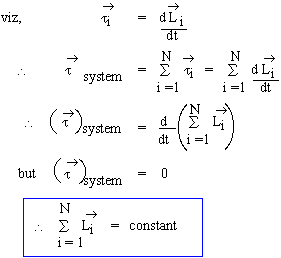|
5.3 Law of Conservation of angular momentum
Total angular momentum of a system which is isolated, so that no external torque acts on the system,
is always conserved.
This follows from the law of motion.

In many daily life phenomena the processes are governed due to this law.
A ballet dancer increases or decreases his/her spin motion speed by folding his/her arms as close
to his/her body or by spreading his/her arms away from his/her body respectively.
A diver folds his/her body in as round a shape as tightly as possible to perform a greater number of somersaults before striking the water.
Solved
Problems
1. Does force of friction always oppose motion ? Can it be a cause of motion, explain with examples.
Solution
The force of friction does not necessarily always oppose motion ; one kind of force of friction
can produce, i.e. can be the cause of change in state of motion but simultaneously some other kind of
force of friction will oppose the motion though with lesser effect.
For example,
While negotiating bends in a road the vehicle through its wheels pushes the (non-slippery) road
in the outward direction, the road then exerts static force of friction in the inward direction
which can provide the centripetal force. However the force the kinetic friction or rather rolling
friction continues to oppose the motion along tangential direction.
An object like ring, disc, cylinder, sphere cannot be rolled over a surface unless the surface
is rough. The static force of friction then provides the necessary turning moment ; once the rolling
motion starts, then the force of rolling friction continues to oppose the rolling motion.
|
Index
5.1 Rotational motion of a rigid body about a fixed
axis
5.2 Rolling Motion
5.3 Law of Conservation of Angular Momentum
Chapter 6
|


